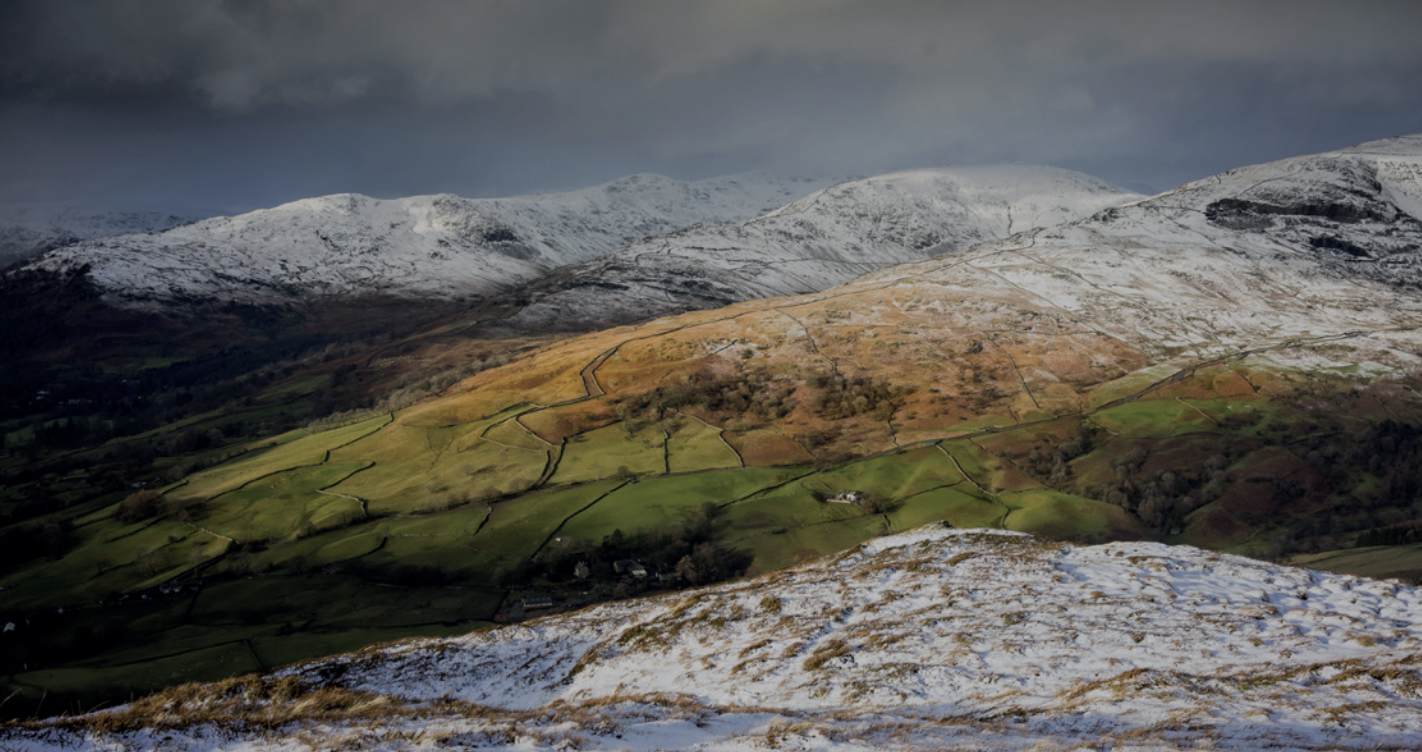
Running north to south from the pass of Dunmail Raise, the classic glacial U-shaped valley containing the popular tourist spots of Grasmere and Ambleside lies at the heart of the English Lake District. It is home to the two lovely but relatively small lakes of Rydal and Grasmere, both surrounded by woodland and pasture, and overlooked by craggy high fells. More than most other valleys, Grasmere, Rydal and Grasmere show off a diversity of landscape, offering a sample of everything the Lake District has to offer.
Humanity has left its mark here over the millennia. There is some Neolithic or Bronze Age rock art at Allan Bank and the possible medieval burial site of King Dunmail at Dunmail Raise to the north. A Roman fort and civilian settlement was constructed at Waterhead, Ambleside.
Industry-wise, the valley has seen much activity. Mining and slate or stone quarrying as well as charcoal production were all carried out here. The abundant water power available from the becks was used from the medieval period until the 19th century for a number of processes, including corn grinding, wooden bobbin production, crushing bark for tanning, and manufacturing linen and woollen cloth.
Tourism has played an important part in the valley’s story. Through its mention in the early guide books as well as the influence of Wordsworth, Grasmere, Rydal and Ambleside became hugely popular destinations. This was further enhanced by the building of metalled roads after 1770 and the railway to Windermere in 1847. Of course, Grasmere and Rydal are forever linked with William Wordsworth and his family as well as other important figures of the Romantic movement. The Wordsworth homes of Dove Cottage and Rydal Mount are enjoyed by visitors from all over the world. Dora’s Field in Rydal is a delightful area of woodland that was planted with wild daffodils as a memorial to Wordsworth’s daughter Dora who died at a tragically young age.
The conservation link is strong in the valley, too. Wordsworth had protested against the extension of the railway from Windermere and this was also taken up by John Ruskin. It was here, at Allan Bank on the shores of Grasmere, that Canon Rawnsley came to retire. Rawnsley was an instrumental figure in the preservation and protection of the Lakeland landscape and was formative in the birth of the National Trust. The Trust now owns many properties in the valley, including the more recently bought traditional farmhouse of High Lickbarrow Farm, the iconic, quirky 17th century Bridge House in Ambleside and the beautiful, tranquil designed landscape of High Close Estate and Arboretum. The 16th century Rydal Hall, now owned by the Diocese of Carlisle, is another example of a designed landscape and features The Grot, a tiny summerhouse looking out to the waterfall and an example of the early Picturesque movement.
The Grasmere, Rydal and Ambleside Valley is a thriving landscape of natural beauty, community and industry, with magnificent surviving villas, designed landscapes and major artistic importance.